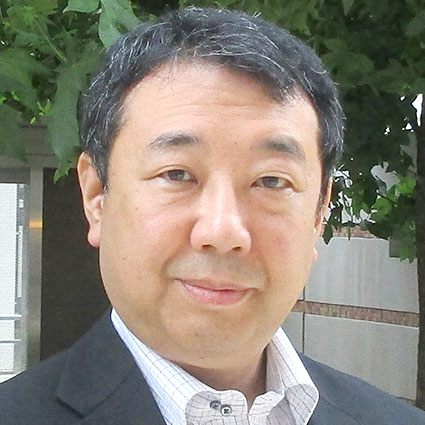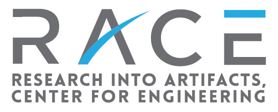Message
RESEARCH INTO ARTIFACTS, CENTER FOR ENGINEERING
~Center for the Next Generation Manufacturing Research and Education~
On April 1st, 2019, the new Research into Artifacts, Center for Engineering, The University of Tokyo, was established as the center for the next generation manufacturing research and education.
Thanks to modern technological development and its dissemination, peoples’ lives have become rich and comfortable. However, the same development has caused new socio-environmental issues such as the destruction of global environment, susceptibility of cities to disasters, emergence of new diseases, and the increasing number of accidents. Dr. Hiroyuki Yoshikawa (former president of the University of Tokyo) called these problems “the modern evil” and proposed “Artifacts Engineering” as a discipline to solve such problems [1].
Following his proposal, the University of Tokyo established the Research into Artifacts, Center for Engineering, as an organization belonging to the university in 1992. Its first phase (1992–2002) was dedicated to establishing the research agenda, its second phase (2002–2013) was dedicated to the study of creative activities, and its third phase (2013–2019) was dedicated to the study of artifacts engineering as an act of value creation through the interaction between human, society, and artifacts. In 2005, the center was moved from Komaba II Campus to Kashiwa Campus. Therefore, the second and the third phase research activities were mainly conducted at Kashiwa Campus. This research can be deemed as building the foundation of artifacts engineering.
Although the new Research into Artifacts, Center for Engineering, established at this occasion inherits the name of the previous center, its mission is to develop the foundation of artifacts engineering built by the former center and promote research, education, and implementation of the next generation manufacturing (which includes not only product fabrication but also services throughout the product lifecycle) that can contribute to the sustainability of humanity. It is a new center established on the Hongo Campus as an adjunct facility to the Graduate School of Engineering of the Faculty of Engineering.
In recent years, international competition is accelerating due to computerization, spread of the internet, and globalization triggered by information and communication technology. However, the industrial and academic competitiveness of Japan is worsening in this context. Although goals such as SDGs or Society 5.0 are proclaimed, and measures in manufacturing such as Industry 4.0 or Connected Industry are promoted, it remains unclear how these can be realized and what path should be taken to strengthen the international competitiveness of Japan. Moreover, these problems cannot be solved by the effort of individual researchers or organizations alone.
At the new Research into Artifacts, Center for Engineering, researchers from the Graduate School of Engineering of the Faculty of Engineering of the University of Tokyo, in collaboration with researchers from other fields, explore problem-solving methods, including not only technology but also values and acceptability, through interdisciplinary engagements that take the broad relationship between society and technology into account. Through such collaborations, the center will conduct research on needs-driven next generation manufacturing. Moreover, it will promote the introduction of artifacts engineering in society through industry–academia collaboration to contribute to the building of collaborative areas for strengthening competitiveness. Furthermore, we are planning to discuss policies for next generation manufacturing in collaboration with the government.
In order to achieve these objectives, the following three divisions were established within the center: Value Creation Division, Cognitive Mechanism Division, and Applied Intelligence Division. Research and education on designing a new manufacturing and product/service ecosystem are conducted at the Value Creation Division, and investigations into the cognitive process of humans, artifacts as well as artifacts manufacturing that contributes to humanity are conducted at the Cognitive Mechanism Division; research on the fusion of theory and practice of intelligence technology exemplified in artificial intelligence is conducted at the Applied Intelligence Division.
Following is the summary of the goals of the new Research into Artifacts, Center for Engineering:- Implementation to society through collaborative creation between industry, academia, and the government.
Here, not only applying artifacts engineering to manufacturing is considered but also promoting implementation of artifacts engineering to society through problem-solving based on the challenge of manufacturing and value creation of industry-academia collaboration. - Artifacts engineering education / human resource training
Based on the aforementioned activities, we will design/implement an educational curriculum and program for talented students who will engage in next generation manufacturing to train human resources for the same. - Foundational research for artifacts engineering
Foundational research that is important for promoting next generation manufacturing, such as artificial intelligence, robotics, system theory, and next generation production technology, will also be actively conducted.
Research into Artifacts, Center for Engineering, is an open organization. In addition to the coordination with diverse departments and staff of the university, the center is planning to start various study groups at many occasions in collaboration with external companies and research institutions, establish joint research projects, socially cooperative and endowed seminars to promote research, education, and implementation of artifacts engineering in society. We sincerely request your participation, cooperation, and support in the activities of the Research into Artifacts, Center for Engineering.
[1] Hiroyuki Yoshikawa:人工物工学の提唱,イリューム,April 1992.
 Hajime Asama,
Representative at RESEARCH INTO ARTIFACTS, CENTER FOR ENGINEERING
Hajime Asama,
Representative at RESEARCH INTO ARTIFACTS, CENTER FOR ENGINEERING


Comments are closed.